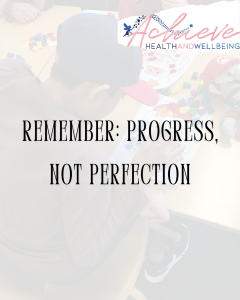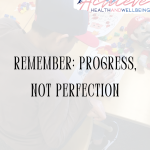Empowering Children with Specialized Needs: Setting and Achieving Unique Milestones
As parents of children with specialized needs, you understand the importance of tailored approaches that can foster growth and development in ways that cater to your child’s unique abilities and challenges. Setting goals to achieve milestones is an essential part of this journey, allowing your child to gain independence, confidence, and a sense of accomplishment. Here, we’ll explore strategies for targeting these goals effectively, along with resources to help guide you along the way.
Understanding Unique Milestones
Every child develops at their own pace, especially those with specialized needs. According to the Centers for Disease Control and Prevention (CDC), children with delays in areas such as communication, social skills, and motor functions often reach milestones differently than their peers (CDC, 2023). Recognizing that milestones are not one-size-fits-all allows parents to focus on what truly matters for their child’s individual growth.

Setting Meaningful Goals
- Identify Priorities: Collaborate with educators, therapists, and healthcare providers to prioritize areas of focus. Understanding your child’s strengths and challenges can help you craft goals that are both achievable and aligned with their interests. For example, if your child enjoys art, you might set a goal to improve fine motor skills through activities like drawing or painting.
- Utilize the SMART Criteria: Setting SMART goals—Specific, Measurable, Achievable, Relevant, and Time-bound—can create a structured approach to targeting milestones. For example, instead of saying “improve communication,” you might say, “increase vocabulary by five new words per month by practicing with flashcards.”
- Break Down Goals: Large goals can seem overwhelming. Break them down into smaller, manageable steps. This not only makes the process less daunting for your child but also allows for celebrating small victories along the way. If the goal is to improve social skills, you might start with initiating a conversation with a peer in a low-pressure setting.
- Make Goals Functional: Ensure that the goals you set are functional and applicable to your child’s daily life. Teaching a child to request help in a variety of situations is a versatile goal that can enhance their independence and integration into different environments.
- Involve Your Child: Whenever appropriate, involve your child in the goal-setting process. This empowers them and gives them a sense of ownership over their journey. Ask them what they enjoy doing, what challenges they face, and what they would like to achieve.
- Monitor Progress and Adjust Goals: Regularly evaluate progress towards the set goals. Creative assessments, such as keeping a goal journal or using visual charts, can help visualize achievement. Be flexible; if a goal isn’t working out as planned, adjust it rather than abandon it altogether.
Support and Resources
- Therapeutic Support: Engaging with specialists like occupational therapists, speech therapists, or behavioral therapists can provide tailored support in achieving specific milestones. These professionals can offer insights and strategies that are effective for your child’s needs.
- Educational Support: Work with your child’s teachers to provide an integrated approach to their goals. Special education provisions often include Individualized Education Programs (IEPs) that can spotlight targets relevant to both academic and personal development.
- Parent Support Groups: Connecting with other parents facing similar challenges can offer valuable insights, encouragement, and shared resources. Organizations such as the National Parent Teacher Association (PTA) and the National Federation of Families for Children’s Mental Health have resources and communities dedicated to supporting families of children with specialized needs.
- Online Resources: Websites like Understood.org and Child Mind Institute offer extensive articles, tools, and tips for parents looking to support their children’s development, providing a wealth of information tailored to specific needs.
Conclusion
Setting and achieving goals for your child with specialized needs is a journey filled with both challenges and rewards. By focusing on their unique milestones, you empower your child to flourish in their own way. Remember, progress may be gradual, but each step forward, no matter how small, is worth celebrating. Embrace the journey together, and know that with patience, support, and tailored strategies, you are equipping your child for a brighter future.
References:
- Centers for Disease Control and Prevention (CDC). (2023). Developmental Monitoring and Screening. Retrieved from CDC Website
By setting meaningful goals and leveraging available resources, you can play an instrumental role in guiding your child towards their individual milestones, fostering an environment of growth, learning, and success.








